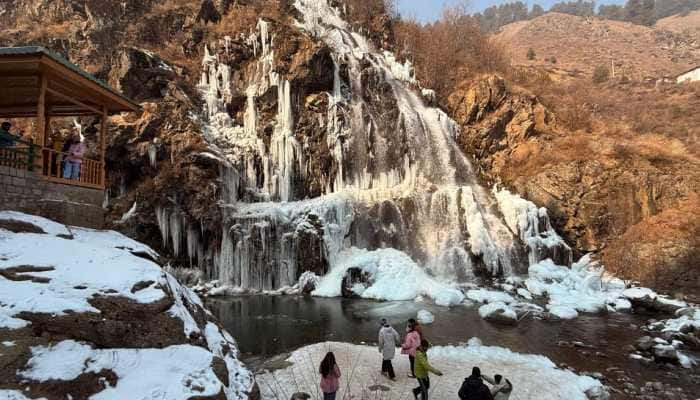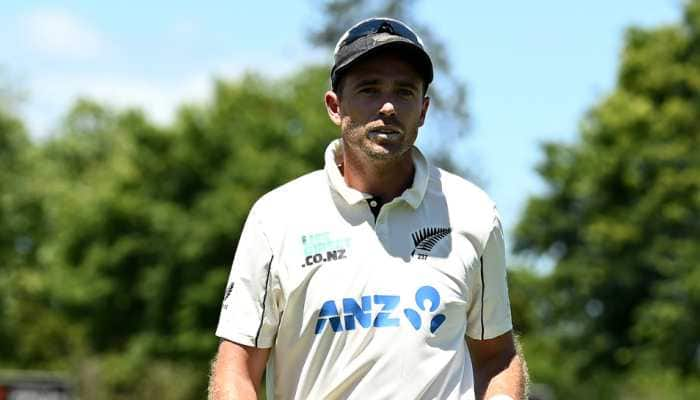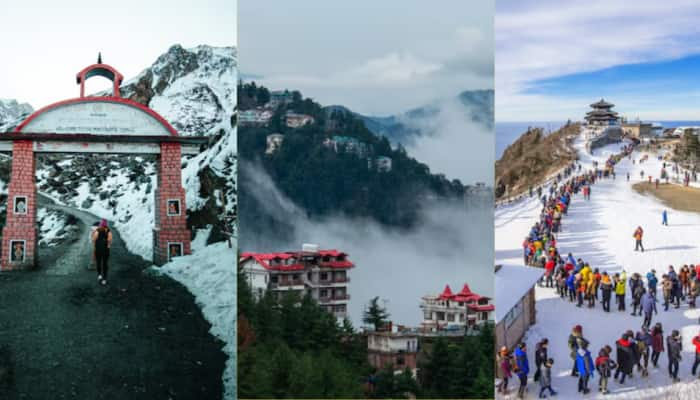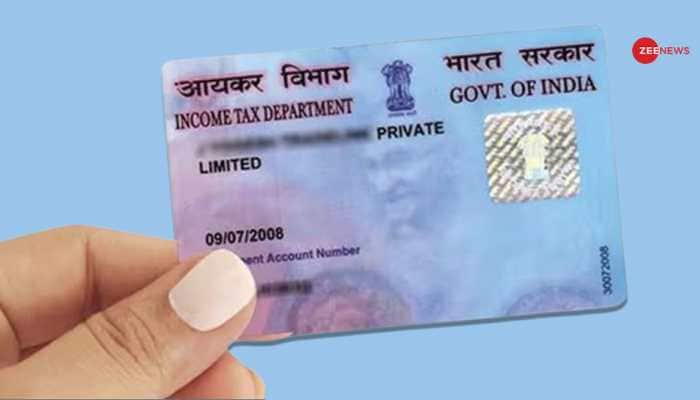World Economic Forum 2016: It's not only about elite talkathon at Davos
Home to the annual talkathon of the rich and powerful from across the world for over four decades, this Swiss resort town has its own history of being a place of eminence for medical tourism as also for winter sports.
Trending Photos
)
Davos: Home to the annual talkathon of the rich and powerful from across the world for over four decades, this Swiss resort town has its own history of being a place of eminence for medical tourism as also for winter sports.
With the annual five-day powwow of business and global leaders beginning under the aegis of World Economic Forum (WEF), the small alpine town is buzzing with top CEOs and others who matter in black business suits and the police and army people in orange-and-blue dress posted to provide security for such a large-scale event.
Still, the streets are not totally devoid of usual skiing enthusiasts and some tourists devouring the rich history of this small Swiss town on snow-capped Alps.
Once famous for being a summer health resort, Davos has gradually emerged as a major winter sport hub on Alps, but its biggest claim to fame for the past four decades has been World Economic Forum's Annual Meeting every January, beginning 1971.
The Geneva-based WEF is hosting its 46th Annual Meeting here beginning today, wherein more than 2,500 leaders from across the world including 50 heads of government are expected to indulge in a high-profile talk fest for five days.
To cover this global elite jamboree, there are nearly 1,000 journalists and support staff as well.
While such a high-profile event leads to all hotels and rental apartments being occupied, the die-hard winter sport fans still throng this place as WEF week also means relatively smaller crowds in ski areas and on mountain cableways.
The only drawback for tourists is that they cannot stay within the town, which has less than 10 medium-sized hotels and about 40 small ones including near-by areas like Klosters and Dorf.
Besides, the so-called WAGs (wives and girlfriends of those attending WEF meet) are also around in large numbers on ski circuits and at various tourist destinations of the town that comprises two big parallel roads and numerous connecting alleys.
Davos' history as a modern and popular holiday destination dates back to 150 years ago in 1865 when first winter guests arrived here. Till then, it was just a summer mountain health resort with a strong reputation for treatment of tuberculosis patients.
One day in February 1865, Doctor Friedrich Unger and Hugo Richter from Germany arrived here and began a course of treatment on a bed made from a hay sled covered with boards.
The treatment rapidly proved successful and both men were able to return to work. Soon after, Doctor Friedrich Unger returned to Davos and worked as a doctor here for over 20 years. Hugo Richter married a Davos girl and took over the management of a guest house here.
Later, he also moved his publishing business to this small town and began printing two local newspapers.
Another feather in its cap is Davos being home to Ernst Ludwig Kirchner, who spent his last 20 years in this town, which is full of many of his finest paintings.
Besides a museum devoted to Kirchner's work, his paintings can be seen anywhere and everywhere in Davos.
Towards the end of his life, Kirchner suffered a major nervous breakdown and spent his last days in a sanatorium in Davos. This is the same sanatorium that inspired Noble laureate Thomas Mann's classic novel 'The Magic Mountain'.
Davos' annual affair with WEF began in 1971 when the Forum was known as European Management Forum and that year WEF founder Klaus Schwab invited over 400 European business
leaders for a meeting at Davos Congress Centre under the patronage of European Commission.
Subsequently, WEF was formed and leaders from across the world began congregating in Davos at the end of January every year.
Over the years, WEF Annual Meeting in Davos grew larger and larger and has been host to many historic accords and meetings, including one draft agreement on Gaza and Jericho between the then Israel Foreign Minister Shimon Peres and Palestine Liberation Organisation Chairman Yasser Arafat in 1994.
In 1988, Greece and Turkey also signed their "Davos Declaration" here, which saw the two countries avoiding a war, while North and South Korea held their first ministerial level meetings in Davos in 1989 -- a year that also saw German chancellor Helmut Kohl here discussing German reunification and then the knocking down of Berlin Wall.
In the past 46 years, only once WEF has held its Annual Meeting outside Davos when in 2002 it decided to shift the venue to New York to show solidarity with that city and the American public after the 9/11 terrorist attacks.
India's presence has also been increasing at the Davos meeting, during which hundreds of Indians can be seen strolling on its narrow roads, one of which has been hosting an 'India Adda' for many years.
Since last year, it has been renamed Make In India lounge to showcase the flagship programme of Prime Minister Narendra Modi, but regulars still prefer to call it by the old name of India Adda.
Stay informed on all the latest news, real-time breaking news updates, and follow all the important headlines in india news and world News on Zee News.
Live Tv







)
)
)
)
)
)
)
)
)
)
